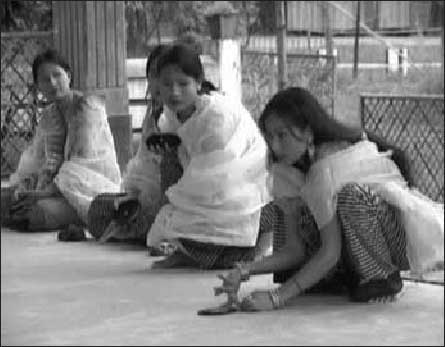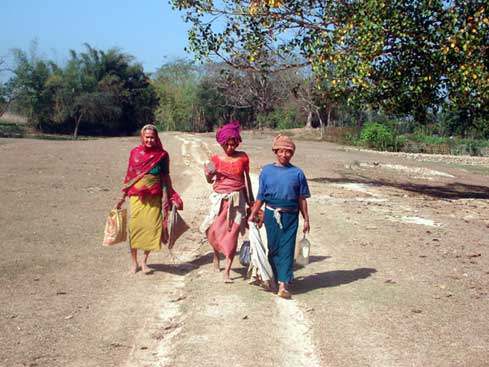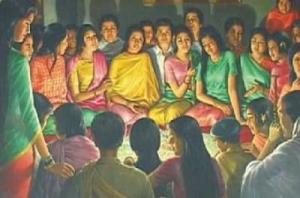Physically, a fine race, the Manipuris is devoted to sports and games. There are number of traditional games that have their origin back in Manipur. One of the most popular indoor game among them is Kang. The game, Kang is known to the Bishnupriya Manipuris as Gilla (though Gilla is developed as a variant of Kang) and Kanga-Sanaba to the Meiteis. It is an indigenous Manipuri game played on the day between Manipuri New Year’s Day (Cheiraoba/Bishu) and the Ratha Jatra (Kang) festival.
A round object called Kang which is the seed of a creeper (Uri) is used in this game. It is about one and a half inch in diameter and ¾ of an inch in thickness. The game is played among two teams each of seven either males of females usually mixed up. A player has to Shoot a point from a fixed position. If the parties hit the target twice with the Kang then, Lamtha is adopted. Lamtha is played by propelling the disk on its flat side along the surface of the ground by the force of middle finger of the right hand acting the finger of the left.. At the end of half a duration of the play, interchange of the directions takes place. Of the two teams, the one who can hit the target for a greater number by two Chekpheis (shooting from a standing position) and one Lamtha is the winner.
There are tales, both legendary and mythological, that claim that Kang was played by gods and goddesses, soon after the earth was created. According to some sources Kang is played by the deity “Panthoibi”. It is believed that the seven players on either side represent the seven days of the week and the Chekphei and Lamtha kangkhul are believed to 15 in number on one side and both sides represent 30 days, making a complete month. There are evidences that the Manipuris began to play this game well before the arrival of Vaishnavism in Manipur. Earlier, the dignitaries of the Palace including the Maharani and the Maharaja also participated on social functions. In the old days Kang was played during summer starting from Cheiraoba/Bishu to Kang.
Presently, the game is played in several tournaments through out the year. Rules and regulation have been modified to suit the changing needs of the game. In Bangladesh a Kang Federation is formed to organize the game annually. Besides there are few individual attempts to preserve the cultural tradition of Manipur in some Bishnupriya Manipuri localities like Tilakpur, Ghoramara etc.
To download the special issue of Pouri Patrika on Bishnupriya Manipuri Kang celebration and the Game of Kang click here.










